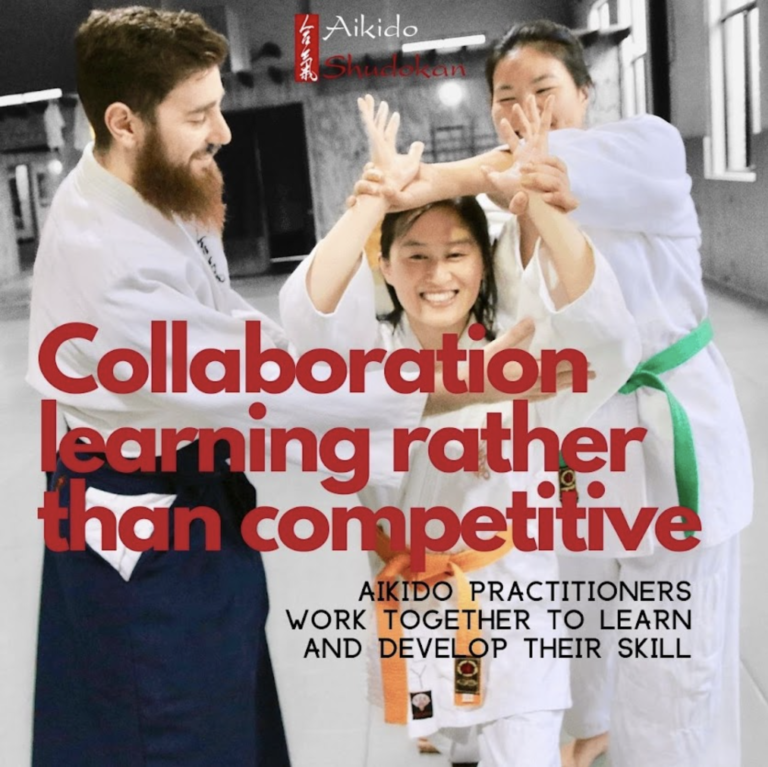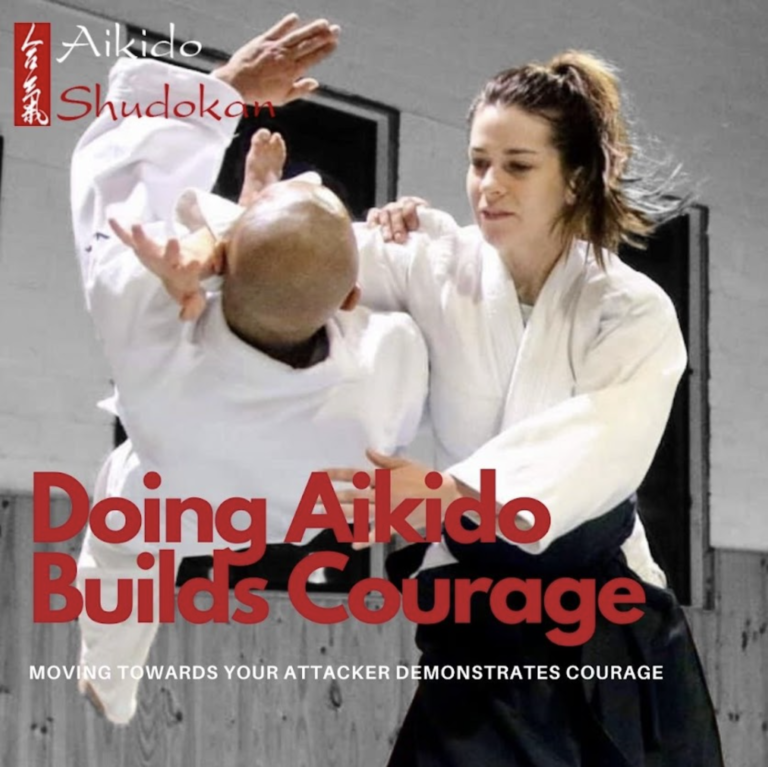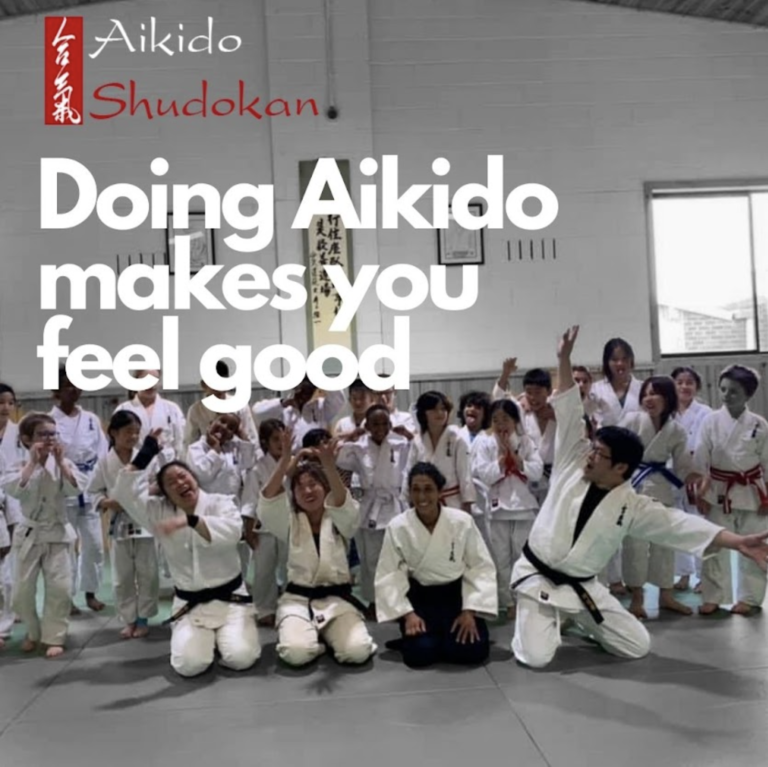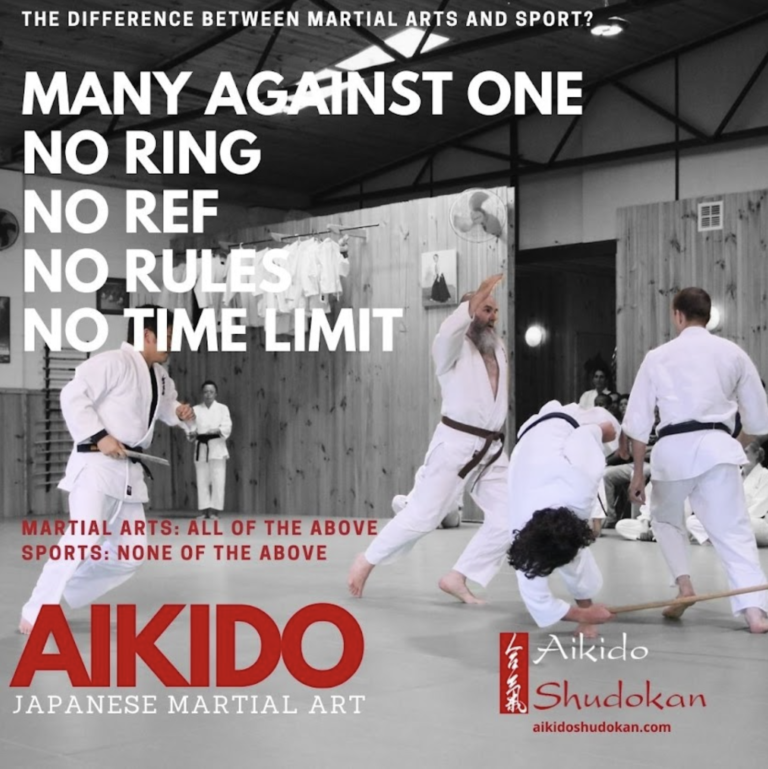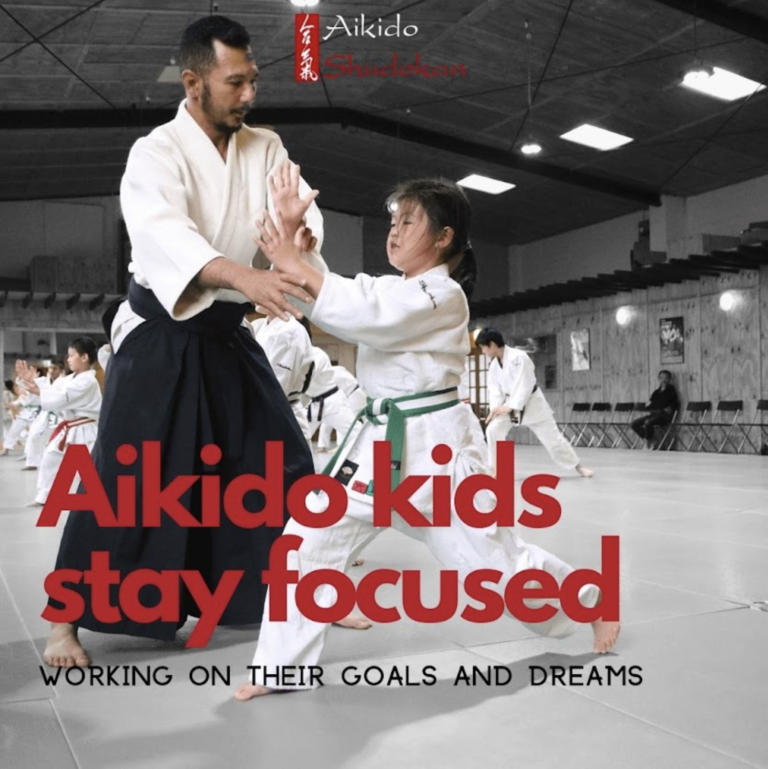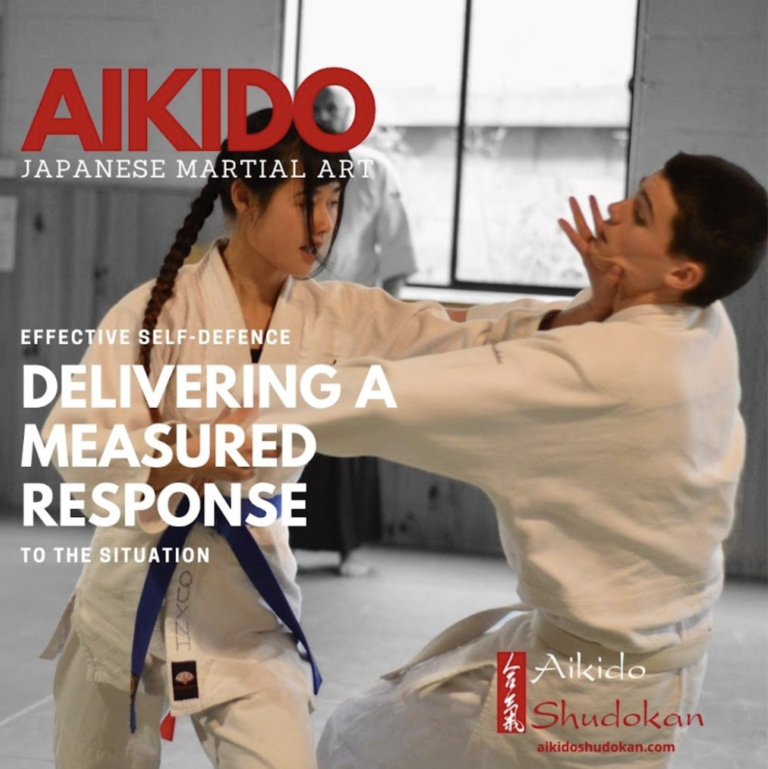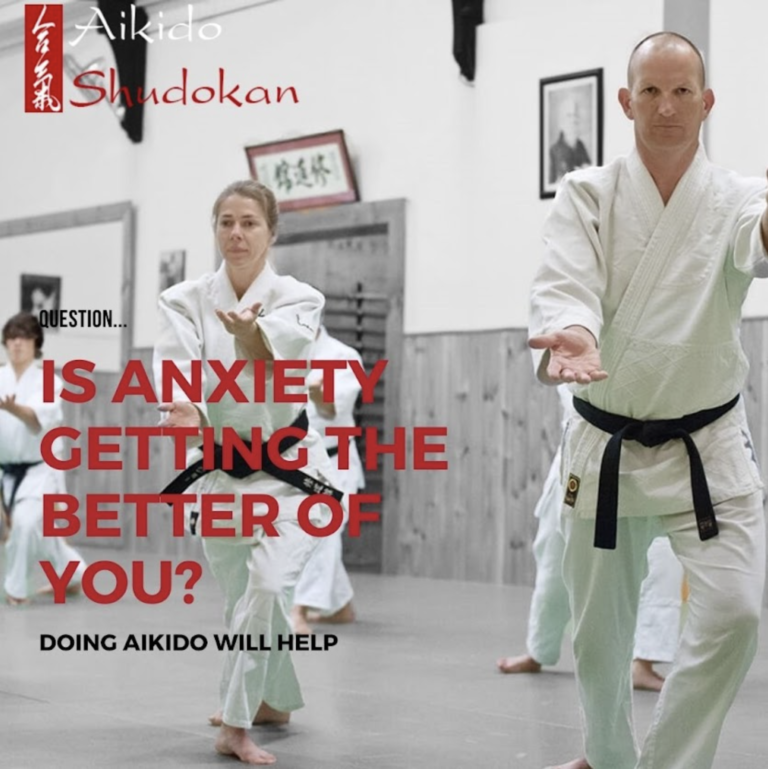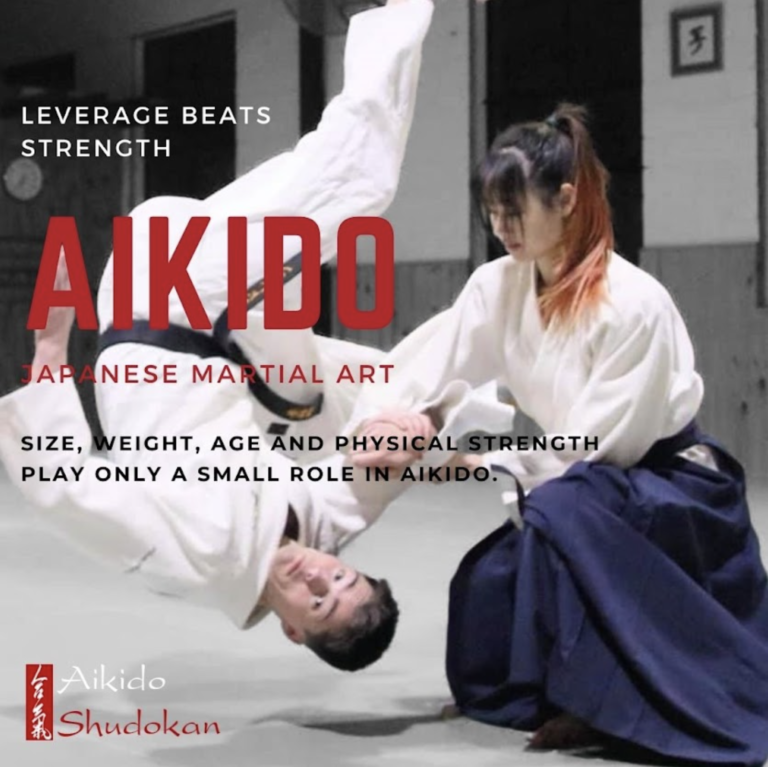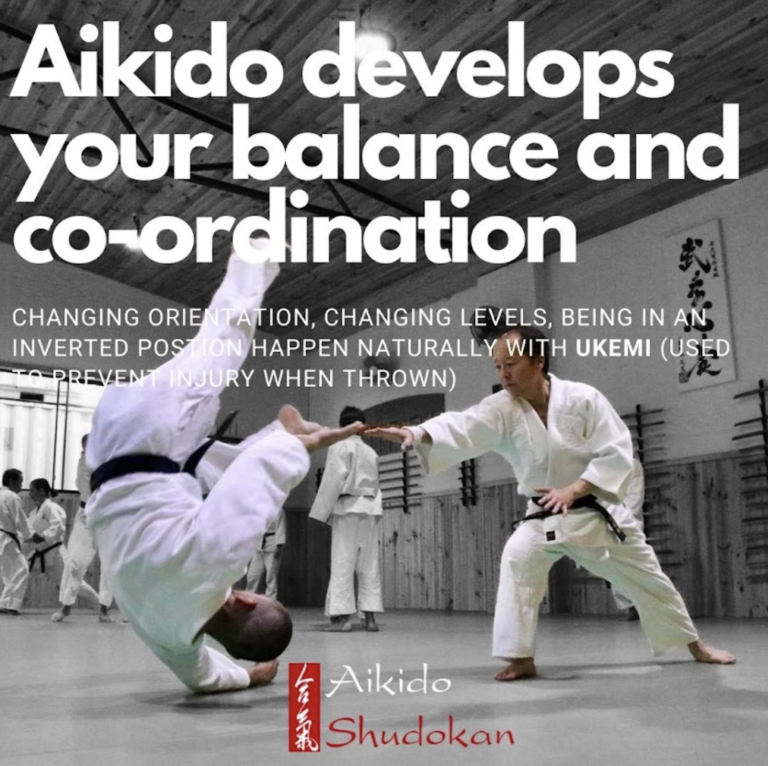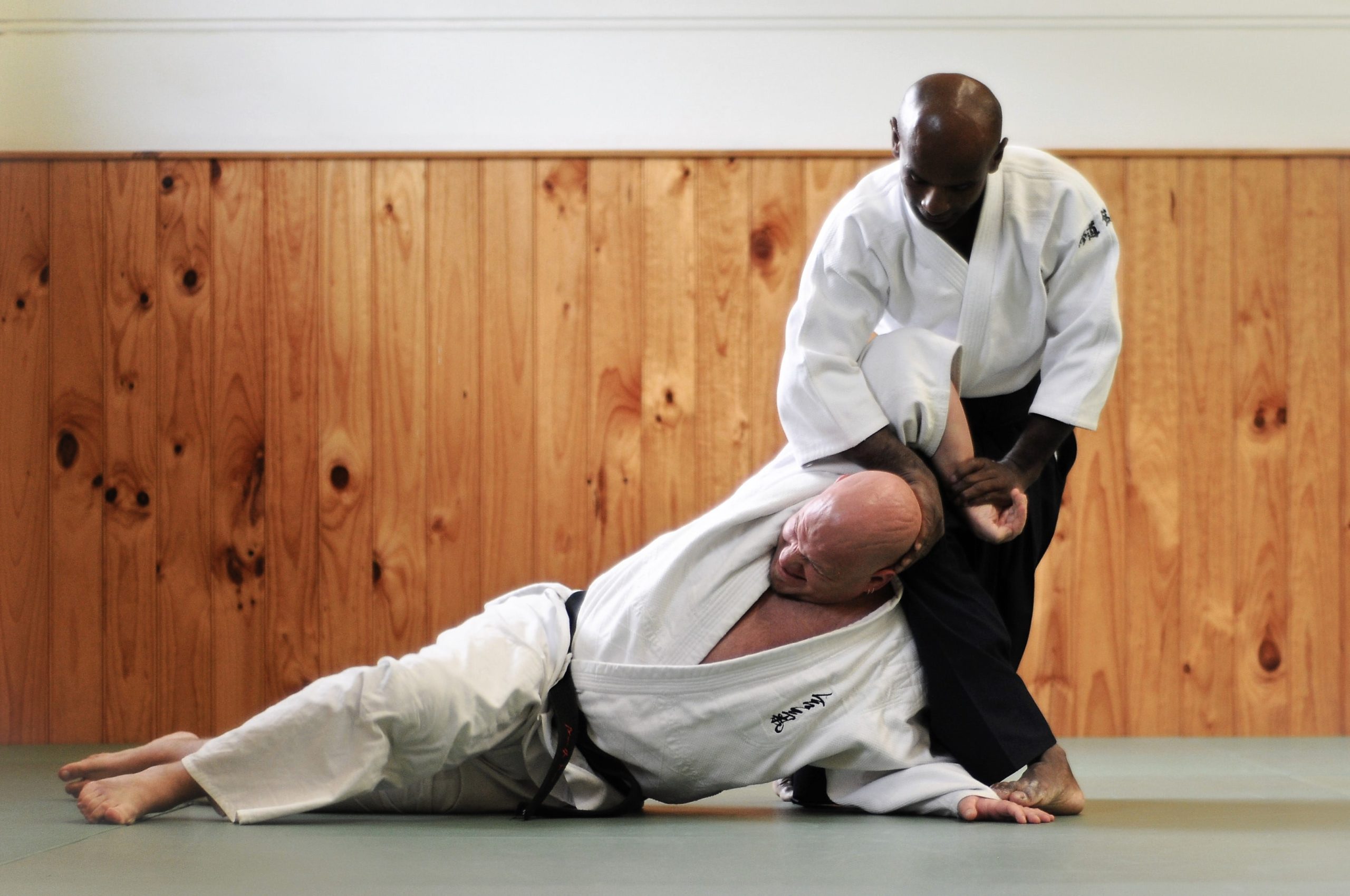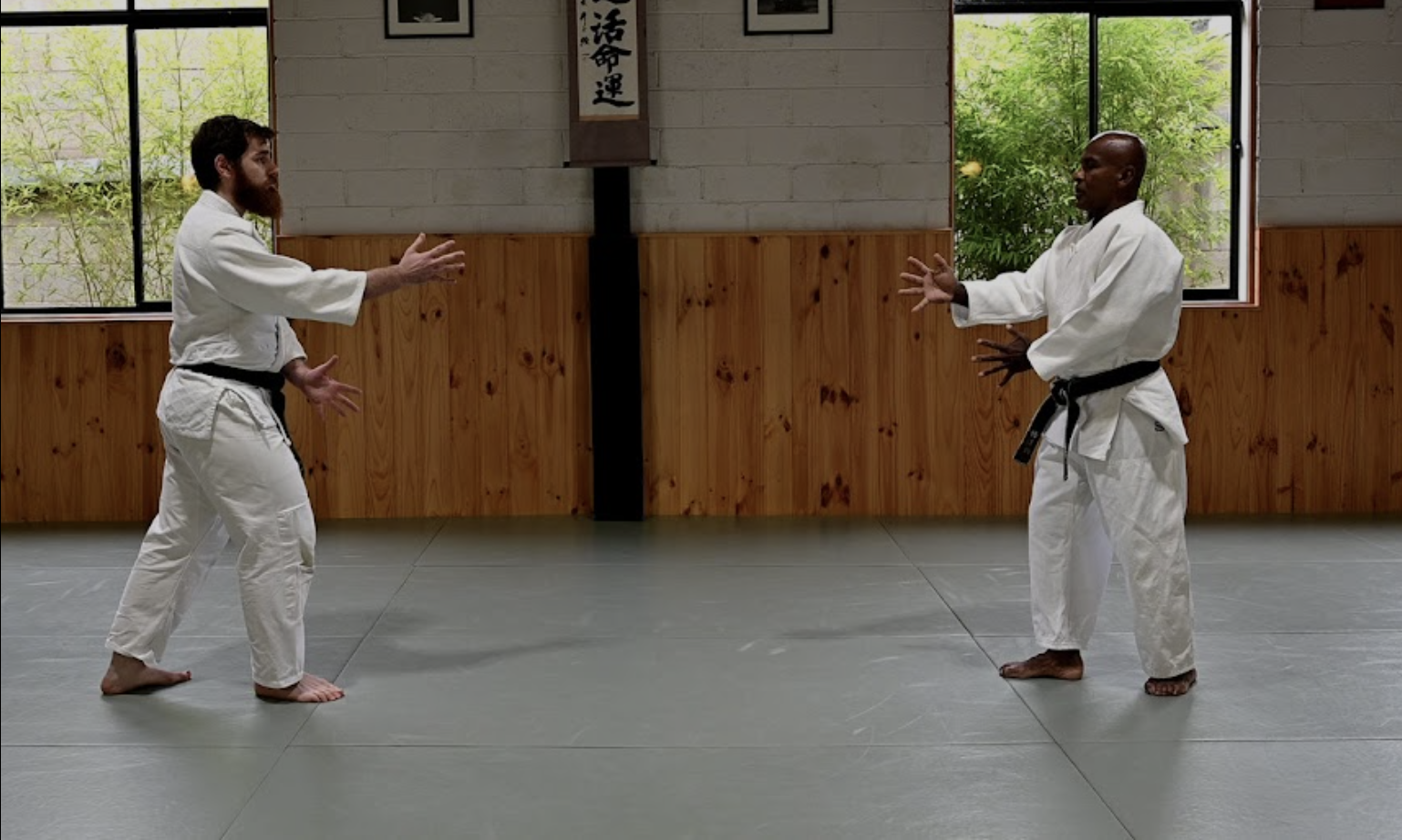Aikido training in melbourne
“The way of peace and harmony”
A JAPANESE TRADITIONAL MARTIAL ART
KAMAE : STANCE
Kamae is your basic readiness stance and trained on both the right (migi-hanmi) and left (hidari-hanmi) sides. This posture is essential as all movement and then technique start with Kamae.In Aikido, kamae (構え) refers to the basic stance or posture that a practitioner assumes before engaging in technique or free-flow attacks. Most of the weight is placed on the front leg, and the back leg is kept straight or locked. Hands project forward, emphasising forward focus.
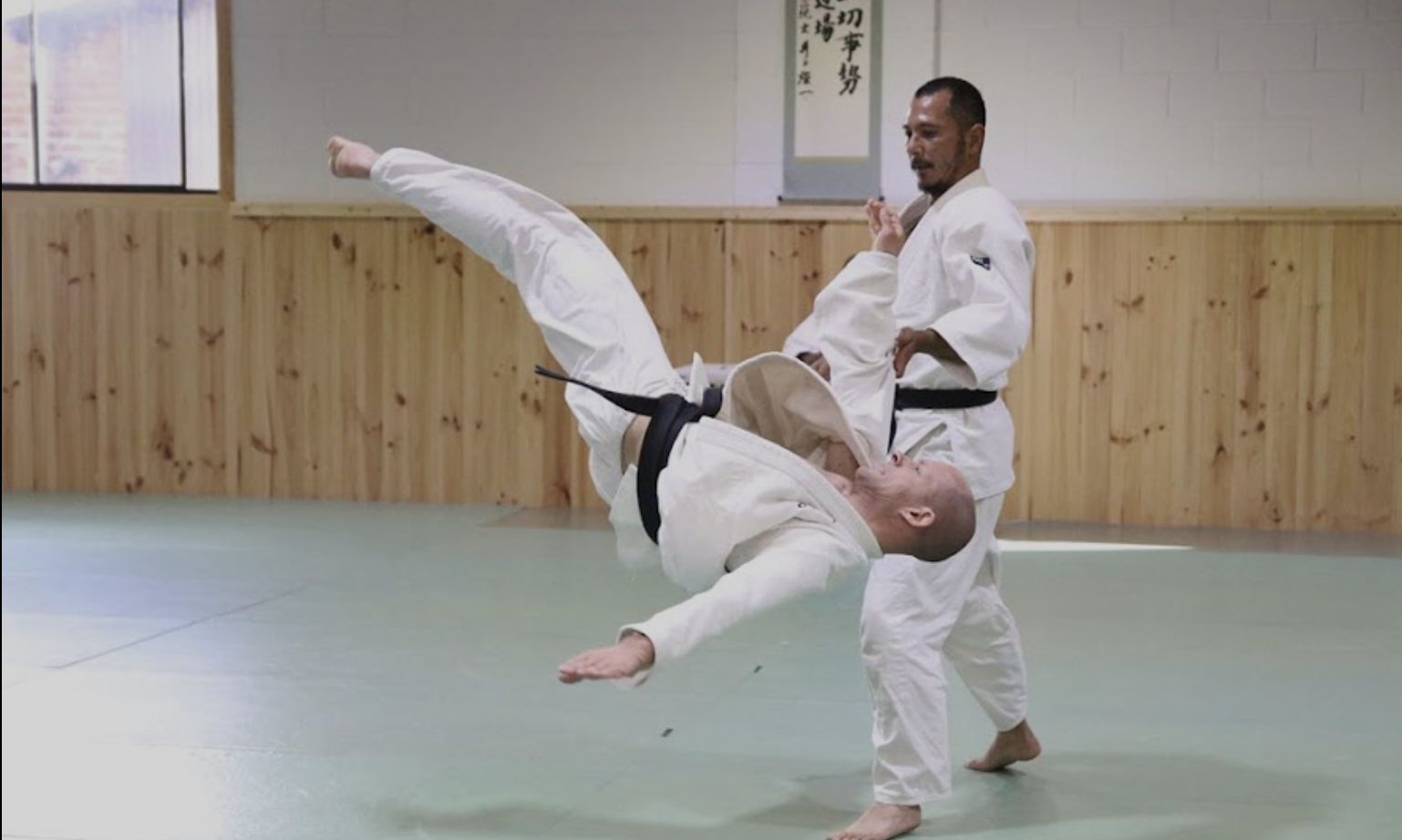
UKEMI: FALLING
To prevent injury when you are receiving the technique (being thrown) we train how to fall. Learning how to fall reduces your chance of injury and also enables you to get back to your feet very quickly.In Aikido, ukemi (受け身) refers to the art of receiving or taking falls and throws safely and efficiently. Ukemi is an essential part of Aikido training, as it allows practitioners to practice techniques without injury and to develop their sensitivity, balance, and timing.
There are several different types of ukemi in Aikido, including:- Zenpo kaiten: This is a forward roll, where the practitioner rolls over their shoulder and across their back.
- Koho kaiten: This is a backward roll, where the practitioner rolls over their shoulder and across their back in the opposite direction.
- Mae ukemi: This is a front breakfall, where the practitioner lands on their front while absorbing the impact with their arms and legs.
- Ushiro ukemi: This is a backward breakfall, where the practitioner lands on their back while absorbing the impact with their arms and legs.
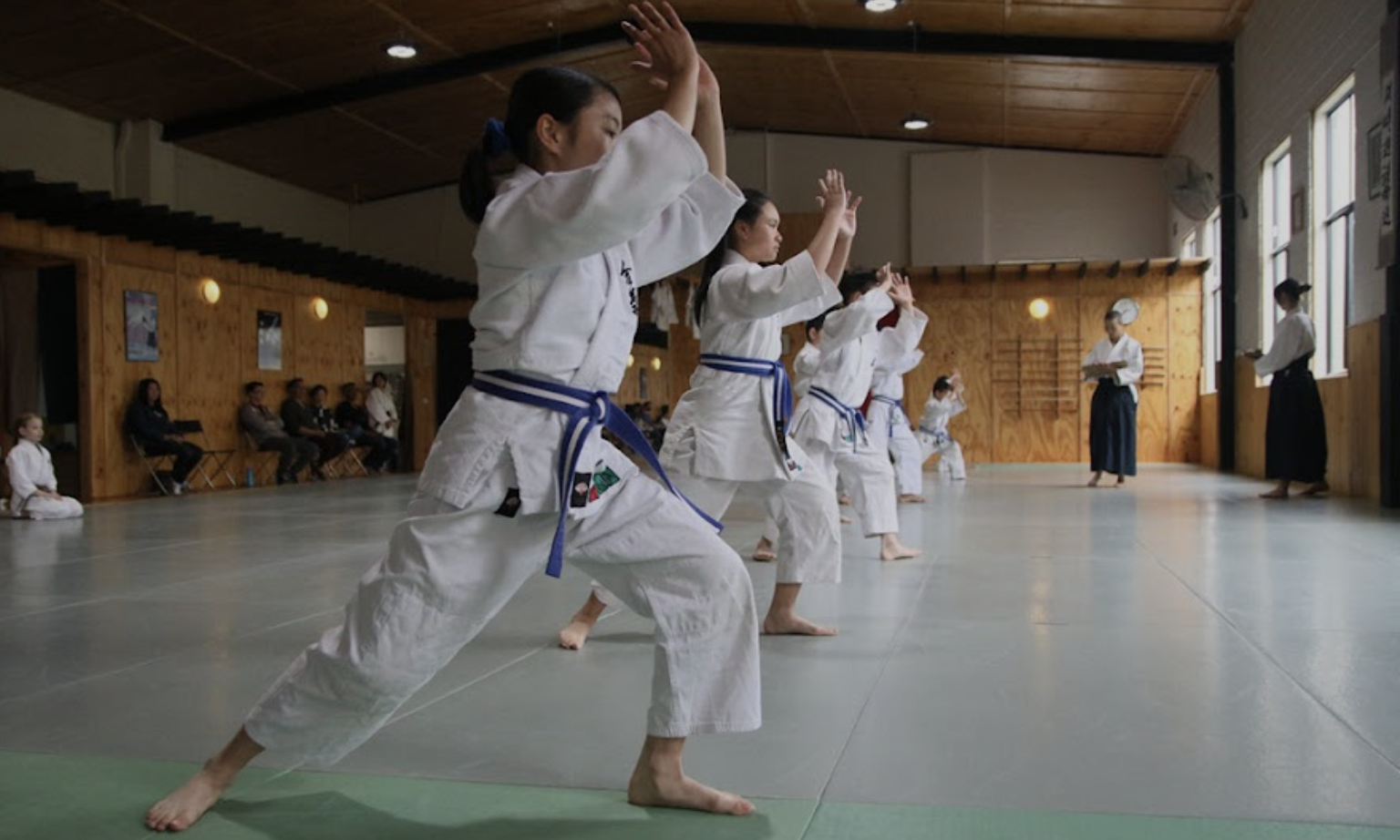
KIHON DOSA : BASIC MOVEMENT
To learn the fundamental body movements of aikido, we train the Kihon Dosa. The basic body movements are trained without a technique in the forefront of your mind. This is about building muscle memory of movement and developing Hiriki or “elbow power”.Kihon Dosa (基本動作) is a term used in Aikido that refers to the basic movements and techniques that form the foundation of Aikido training. Kihon Dosa is a Japanese term that translates to “basic movements” or “fundamental techniques”.
Kihon Dosa consists of a set of standardized movements that are practiced repeatedly in order to develop proper posture, balance, and coordination. These movements include basic strikes, throws, and footwork, and are performed both solo and with a partner. The purpose of Kihon Dosa is to develop a strong foundation of fundamental skills and techniques that can be built upon as the practitioner progresses in their training. By practicing Kihon Dosa regularly, Aikido practitioners can improve their physical abilities, such as balance, coordination, and flexibility, as well as their mental focus and awareness. Some of the Kihon Dosa techniques commonly practiced in Aikido include:- Tai no henko (body change)
- Hiriki no yosei (elbow power)
- Shumatsu dosa (end-of-class movements)
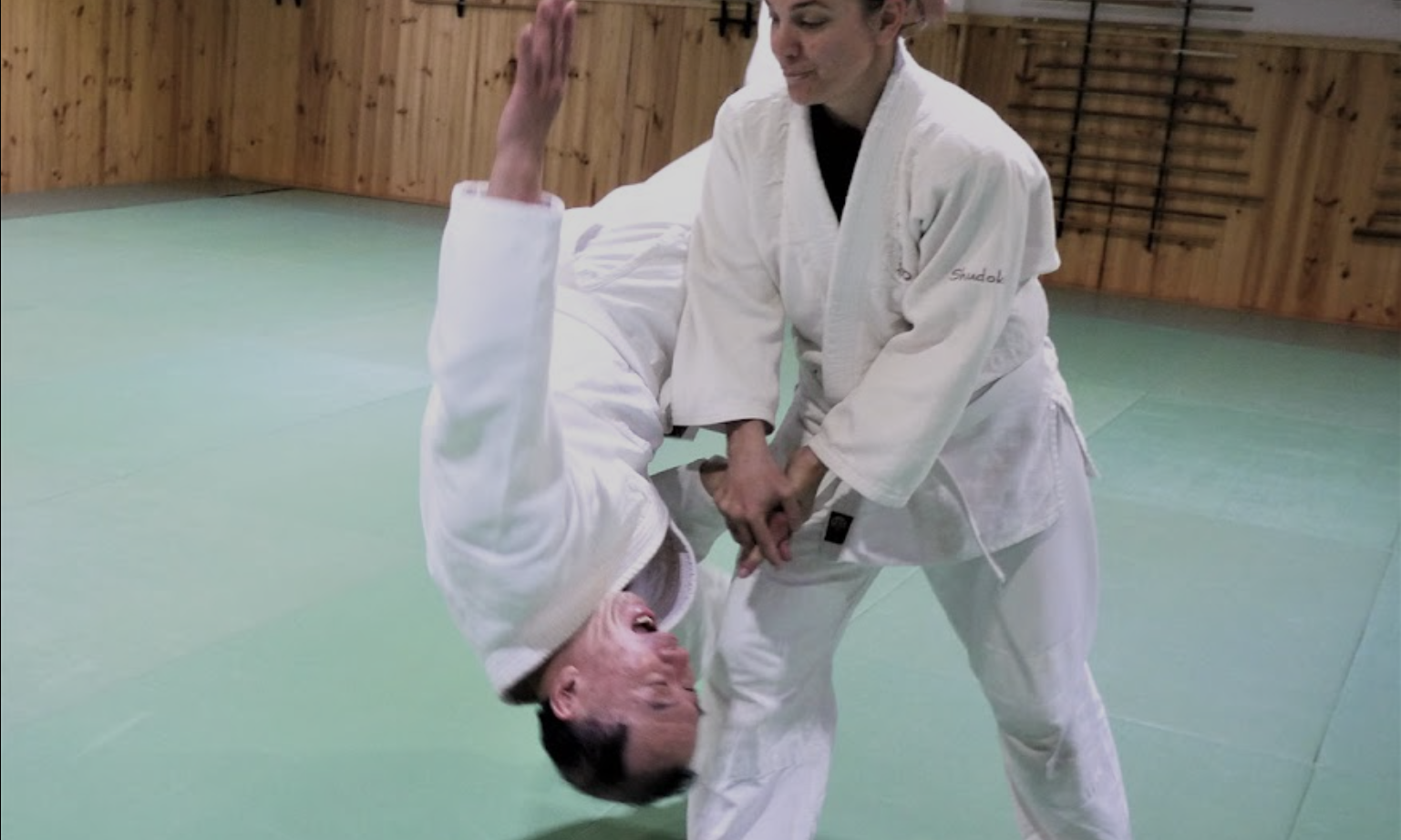
KIHON WAZA : BASIC TECHNIQUE
This is the basic technique and how each technique should be learned and taught. It is the basics and should be practiced diligently. The angles, movements, the length of steps all matter with performing Kihon Waza.Kihon Waza (基本技) is a term used in Aikido that refers to the fundamental techniques of Aikido. Kihon Waza is a Japanese term that translates to “basic techniques”.
Kihon Waza includes a set of techniques that are taught in a structured and systematic way, and are designed to help Aikido practitioners develop their skills and understanding of Aikido principles. These techniques are based on basic movements and postures, and include strikes, throws, joint locks, and pins. Kihon Waza is typically taught after Kihon Dosa (basic movements) and is an important part of Aikido training. By mastering Kihon Waza, Aikido practitioners can develop a strong foundation of techniques that can be applied in various situations and can be built upon as they progress in their training. Kihon Waza is also an essential part of grading examinations in Aikido.YOU DON'T PRACTICE HOW TO GET BETTER..YOU 'DO'
JOE THAMBU SHIHAN (8TH DAN)
HOW AIKIDO IS TAUGHT AND PRACTICED
JIYU WAZA : FREE FLOWING
Jiyu Waza (自由技) is a term used in Aikido that refers to free-style practice or sparring. Jiyu Waza is a Japanese term that translates to “free techniques” or “free-style techniques”In Jiyu Waza practice, two Aikido practitioners engage in a free-form exchange of techniques and movements, without predetermined patterns or fixed techniques. Jiyu Waza allows practitioners to apply the techniques they have learned in a dynamic and realistic setting, and to develop their sensitivity, timing, and improvisation skills.
Jiyu Waza can be practiced in different ways, depending on the level of experience and skill of the practitioners. For beginners, Jiyu Waza may involve a limited set of techniques and movements, while for more advanced practitioners, Jiyu Waza may involve a wider range of techniques and movements, including multiple attackers.
Jiyu Waza is an important part of Aikido training, as it allows practitioners to test and refine their techniques and to develop their ability to adapt to different situations and opponents. Jiyu Waza also helps practitioners to develop a deeper understanding of Aikido principles and to cultivate a sense of harmony and connection with their training partners. However, Jiyu Waza should always be practiced with caution and respect for one’s partner, and under the guidance of a qualified instructor.

GOSHIN JITSU : SELF DEFENCE
This is practice to show how various techniques can be applied in “real life” situation. The strict requirements of Kihon Waza are relaxed to ensure your technique is effective in adverse circumstances.Goshin Jitsu (護身術) is a term used in Aikido that refers to self-defense techniques. Goshin Jitsu is a Japanese term that translates to “techniques for self-defense”.
In Aikido, Goshin Jitsu techniques are designed to be effective in real-life situations and to enable practitioners to defend themselves against physical attacks. Goshin Jitsu techniques may include strikes, throws, joint locks, and pressure points, and are based on Aikido principles of blending, redirection, and neutralization.
Goshin Jitsu techniques are typically practiced in a structured and systematic way, and may also include situational awareness and conflict resolution skills, as well as physical techniques.
While Aikido as a martial art is primarily focused on self-defense and peaceful conflict resolution, Goshin Jitsu techniques are specifically designed to address situations where physical self-defense is necessary. Goshin Jitsu techniques can be a valuable addition to Aikido training, as they provide practitioners with practical skills and confidence in their ability to protect themselves and others. However, it is important to remember that self-defense should always be used as a last resort and that avoiding or de-escalating potentially violent situations is often the best course of action.
BENEFITS OF DOING AIKIDO
AIKIDO SHUDOKAN
